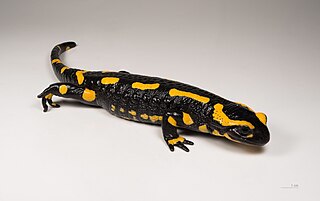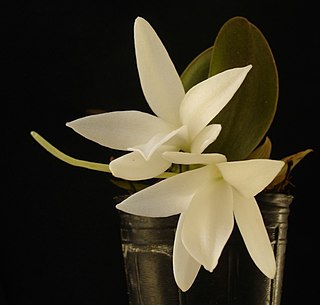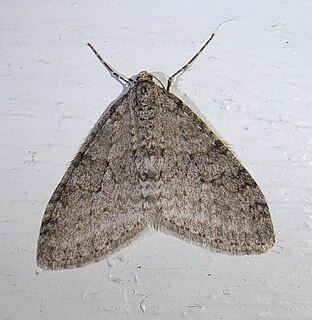
The fire salamander is a common species of salamander found in Europe.

Datura metel is a shrub-like annual or short-lived, shrubby perennial, commonly known in Europe as Indian Thornapple, Hindu Datura, or Metel and in the U.S.A. as Devil's Trumpet or Angel's Trumpet. Datura metel is naturalised in all the warmer countries of the world - notably in India, where it is known by the ancient, Sanskrit-derived, Hindi name धतूरा (dhatūra) -from which the genus name Datura is derived, and in Tamil as ஊமத்தை (ūmattai). The plant is cultivated worldwide, both as an ornamental and for its medicinal properties, the latter being due to its tropane alkaloid content. Like its hardier and smaller-flowered relative Datura stramonium, it is now of widespread occurrence, although showing a preference for warmer climates and of more attractive appearance. Datura metel was first described by Carl Linnaeus in 1753, but few botanically correct illustrations were made until after the New World was settled. The original home of the plant is now known to have been somewhere in the Americas, probably the Greater Antilles. As late as 1992 it was still being claimed that the plant was "...native probably to the mountainous regions of Pakistan or Afghanistan westward..." While there now remains no doubt that the species originated in the New World, evidence is mounting that it was introduced to the Indian subcontinent - whether by human agency or some chance natural event is not known - at an early date preceding by far the arrival of the first European explorers in the Americas.

The seven-colored tanager is a vulnerable species of bird in the family Thraupidae. It is endemic to forests in north-eastern Brazil. It resembles the overall greener green-headed tanager; a species confusingly known as the seven-coloured tanager (saíra-sete-cores) in Portuguese.

Umetsugu Inoue was a Japanese film director and scriptwriter. He directed 115 movies, wrote 101 screenplays, and is credited with the original story for five films. In addition, he worked with all six major Japanese film production companies.

Aerangis fastuosa, commonly known as the 'Magnificent Aerangis', is a species of epiphytic orchid endemic to Madagascar. It is widespread across Madagascar, stretching from the eastern coastal forests across to the south and along the central plateau. Aerangis fastuosa belongs to the family Orchidaceae, substribe Aerangidinae.

Arundinella is a widespread genus of plants in the grass family, common in many tropical and subtropical regions.

Trichopteryx is a genus of moths in the family Geometridae erected by the German entomologist, Jacob Hübner in 1825.

Trichopteryx polycommata, the barred tooth-striped, is a moth of the family Geometridae. The species was first described by Michael Denis and Ignaz Schiffermüller in 1775. It is found in Europe and the Near East, east to the Caucasus, Transcaucasia, the southern Russian Far East (Primorsk) and Japan (Hokkaido).

Trichopterygini is a tribe of geometer moths under subfamily Larentiinae. The tribe was described by Warren in 1894.

Semiarundinaria fastuosa, the Narihira bamboo, Narihira cane or Narihiradake, is a species of flowering plant in the grass family Poaceae, native to Japan. Growing to 7 m (23 ft) tall by 2 m (7 ft) broad, it is a vigorous, evergreen bamboo with dark green cylindrical canes and dense tufts of lanceolate, glossy green leaves, up to 20 cm (8 in) long.

Lampetis fastuosa is a jewel beetle of the family Buprestidae.

Chrysolina fastuosa, also known as the dead-nettle leaf beetle, is a species of beetle from a family of Chrysomelidae found in Europe, Caucasus and northern Turkey.
Eupithecia fastuosa is a moth in the family Geometridae.
Trichopteryx is a genus of African plants in the grass family.
Trichopteryx is the scientific name of two genera of organisms and may refer to:

Arctotis fastuosa, called Monarch-of-the-veld, is a species of African plants in the daisy family, native to Namibia and South Africa. It has become naturalized on roadsides and in vacant urban lots in southern California.

Holopyga fastuosa is a species of cuckoo wasp.














